We have much more to do and your continued support is needed now more than ever.
Latest Posts
 Deregulation Won’t Protect Us from Climate Change July 31, 2025 Posted in: Clean Energy, Conservation The Administration on Tuesday, July 29, 2025, proposed to reject decades of scientific knowledge about the harms of greenhouse gases and undercut its own authority to regulate climate-altering pollution. Though this is just the latest of many actions that together amount to a deregulatory freefall in America, this action could have significant impact on the…
Deregulation Won’t Protect Us from Climate Change July 31, 2025 Posted in: Clean Energy, Conservation The Administration on Tuesday, July 29, 2025, proposed to reject decades of scientific knowledge about the harms of greenhouse gases and undercut its own authority to regulate climate-altering pollution. Though this is just the latest of many actions that together amount to a deregulatory freefall in America, this action could have significant impact on the… 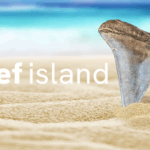 Shark Week: Reef Island July 31, 2025 Posted in: Wildlife Facts It's Shark Week, and even these mega-predators of the sea need love. Ever heard the saying, “There are plenty more fish in the sea”? Welcome to Love (Reef) Island, where five new jaw-dropping fintestants have entered the villa. Loving them can be tricky, but with sharp thinking (or teeth), these sharks are on the search…
Shark Week: Reef Island July 31, 2025 Posted in: Wildlife Facts It's Shark Week, and even these mega-predators of the sea need love. Ever heard the saying, “There are plenty more fish in the sea”? Welcome to Love (Reef) Island, where five new jaw-dropping fintestants have entered the villa. Loving them can be tricky, but with sharp thinking (or teeth), these sharks are on the search…  Rooted in Resistance: Ventura County Youth Take on Big Oil July 30, 2025 Posted in: Environmental Justice “Unless someone like you cares a whole awful lot, nothing is going to get better. It’s not.” Undeniably, the wisest voice across generations, the Lorax sheds a crucial piece of wisdom, one that reverberates across the youth of today, inspiring them to advocate for a better future and tangible actions. In Ventura County, California, a…
Rooted in Resistance: Ventura County Youth Take on Big Oil July 30, 2025 Posted in: Environmental Justice “Unless someone like you cares a whole awful lot, nothing is going to get better. It’s not.” Undeniably, the wisest voice across generations, the Lorax sheds a crucial piece of wisdom, one that reverberates across the youth of today, inspiring them to advocate for a better future and tangible actions. In Ventura County, California, a… 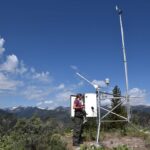 Here’s How the Reconciliation Bill Affects Environmental Justice July 29, 2025 Posted in: Environmental Justice, People and Wildlife This blog is part one of a two-part series about how H.R. 1, referred to as the “One Big, Beautiful Bill,” will impact environmental justice efforts across the United States. Part 2 will take a look at the appropriations bill and how the FY26 federal budget strips away environmental justice protections—from clean water to clean…
Here’s How the Reconciliation Bill Affects Environmental Justice July 29, 2025 Posted in: Environmental Justice, People and Wildlife This blog is part one of a two-part series about how H.R. 1, referred to as the “One Big, Beautiful Bill,” will impact environmental justice efforts across the United States. Part 2 will take a look at the appropriations bill and how the FY26 federal budget strips away environmental justice protections—from clean water to clean…  Wildlife Reasons to Celebrate Plastic Free July July 28, 2025 Posted in: Conservation, People and Wildlife, Wildlife Facts It’s that time of year again, Plastic Free July! This is an opportunity to stop, think, and change how we interact with plastic. Each year, more plastic is produced and less is recycled, but where does it all end up? Let’s explore how plastic is affecting some of our favorite wildlife species and examine a…
Wildlife Reasons to Celebrate Plastic Free July July 28, 2025 Posted in: Conservation, People and Wildlife, Wildlife Facts It’s that time of year again, Plastic Free July! This is an opportunity to stop, think, and change how we interact with plastic. Each year, more plastic is produced and less is recycled, but where does it all end up? Let’s explore how plastic is affecting some of our favorite wildlife species and examine a… 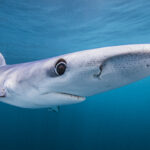 Sharks & Plastic Free July July 28, 2025 Posted in: Conservation, People and Wildlife, Wildlife Facts While it is Plastic Free July, sharks are the talk of the town right now. Let’s dive into how plastic pollution is affecting some of our favorite shark species. Blue Sharks Credit: Ken Kiefer 2/Getty Images Unfortunately, these sharks are highly impacted by plastic pollution. It is very common for these sharks to get tangled…
Sharks & Plastic Free July July 28, 2025 Posted in: Conservation, People and Wildlife, Wildlife Facts While it is Plastic Free July, sharks are the talk of the town right now. Let’s dive into how plastic pollution is affecting some of our favorite shark species. Blue Sharks Credit: Ken Kiefer 2/Getty Images Unfortunately, these sharks are highly impacted by plastic pollution. It is very common for these sharks to get tangled… 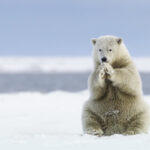 The Reconciliation Bill Passed. What Does That Mean for Wildlife? July 24, 2025 Posted in: Conservation, People and Wildlife Thousands of miles separate Washington, D.C., from the Alaskan coastal plains where polar bear moms raise their cubs. But decisions made on Capitol Hill can have life-or-death implications for polar bears and other vulnerable wildlife—in the Arctic and across the nation. Earlier this month, Congress made several such decisions as part of a broad budget…
The Reconciliation Bill Passed. What Does That Mean for Wildlife? July 24, 2025 Posted in: Conservation, People and Wildlife Thousands of miles separate Washington, D.C., from the Alaskan coastal plains where polar bear moms raise their cubs. But decisions made on Capitol Hill can have life-or-death implications for polar bears and other vulnerable wildlife—in the Arctic and across the nation. Earlier this month, Congress made several such decisions as part of a broad budget…  From Farm Runoff to Faucets: How H2Ohio Protects Water July 21, 2025 Posted in: Conservation, People and Wildlife What is H2Ohio? H2Ohio is a statewide water quality initiative launched in 2019 to address Ohio’s most pressing water challenges, primarily nutrient runoff that feed harmful algal blooms in Lake Erie, lead contamination in the drinking supply, and failing wastewater infrastructure. The program focuses on three key areas: Agricultural Conservation – Helping farmers implement science-backed…
From Farm Runoff to Faucets: How H2Ohio Protects Water July 21, 2025 Posted in: Conservation, People and Wildlife What is H2Ohio? H2Ohio is a statewide water quality initiative launched in 2019 to address Ohio’s most pressing water challenges, primarily nutrient runoff that feed harmful algal blooms in Lake Erie, lead contamination in the drinking supply, and failing wastewater infrastructure. The program focuses on three key areas: Agricultural Conservation – Helping farmers implement science-backed…  QUIZ: The Little Owl That Lives in a Cactus July 17, 2025 Posted in: Wildlife Facts The National Wildlife Federation is joining forces again with LG Electronics (LG) on their ongoing campaign to highlight vulnerable and endangered species. This summer, LG’s Time Square display spotlights the cactus ferruginous pygmy-owl (Glaucidium brasilianum cactorum). The video brings to life our partnership with NBC’s The Americas, an epic 10-part nature documentary which showcases the majestic wildlife and wild places throughout North…
QUIZ: The Little Owl That Lives in a Cactus July 17, 2025 Posted in: Wildlife Facts The National Wildlife Federation is joining forces again with LG Electronics (LG) on their ongoing campaign to highlight vulnerable and endangered species. This summer, LG’s Time Square display spotlights the cactus ferruginous pygmy-owl (Glaucidium brasilianum cactorum). The video brings to life our partnership with NBC’s The Americas, an epic 10-part nature documentary which showcases the majestic wildlife and wild places throughout North… 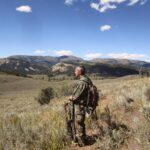 Fighting for Common Ground July 14, 2025 Posted in: Conservation, People and Wildlife You don't need a weatherman to know which way the wind is blowing, nor a pollster to know this country is at odds with itself. But while TV talking heads take pleasure in telling us we’re a nation splintered and cracking at the seams, a house divided and ready to fall, those of us with…
Fighting for Common Ground July 14, 2025 Posted in: Conservation, People and Wildlife You don't need a weatherman to know which way the wind is blowing, nor a pollster to know this country is at odds with itself. But while TV talking heads take pleasure in telling us we’re a nation splintered and cracking at the seams, a house divided and ready to fall, those of us with…  QUIZ: Sharks! The Amazing Creatures That Are Older Than Dinosaurs July 10, 2025 Posted in: Conservation, Wildlife Facts Sharks are not only the biggest fish in the ocean, but they are probably one of the most popular. Some people are curious about them, while others fear them. But like most wildlife, if you learn more about their behavior, you can take steps to coexist peacefully and enjoy your ocean swim. Quick Facts About…
QUIZ: Sharks! The Amazing Creatures That Are Older Than Dinosaurs July 10, 2025 Posted in: Conservation, Wildlife Facts Sharks are not only the biggest fish in the ocean, but they are probably one of the most popular. Some people are curious about them, while others fear them. But like most wildlife, if you learn more about their behavior, you can take steps to coexist peacefully and enjoy your ocean swim. Quick Facts About…  Meet the 2025 Class of NWF Graduate Student Research Fellows July 9, 2025 Posted in: People and Wildlife, Students and Nature Each year, NWF Graduate Student Research Fellows support the advancement of NWF Education and Engagement programs through dedicated research projects. This research helps to expand the content and development of a variety of efforts across NWF's Education and Engagement programs while also providing the student Fellows with the opportunity to develop their research and professional…
Meet the 2025 Class of NWF Graduate Student Research Fellows July 9, 2025 Posted in: People and Wildlife, Students and Nature Each year, NWF Graduate Student Research Fellows support the advancement of NWF Education and Engagement programs through dedicated research projects. This research helps to expand the content and development of a variety of efforts across NWF's Education and Engagement programs while also providing the student Fellows with the opportunity to develop their research and professional…  The Road to Environmental Justice: A Call for Collective Action July 8, 2025 Posted in: Environmental Justice It was an incredible honor to serve as one of the keynote speakers at Johns Hopkins University’s HOP25 Conference, at the invitation of the Environmental Sciences and Policy/GIS Program. My keynote was entitled “The History of Time and This Time in History” and the opportunity to speak on such an important issue felt both humbling…
The Road to Environmental Justice: A Call for Collective Action July 8, 2025 Posted in: Environmental Justice It was an incredible honor to serve as one of the keynote speakers at Johns Hopkins University’s HOP25 Conference, at the invitation of the Environmental Sciences and Policy/GIS Program. My keynote was entitled “The History of Time and This Time in History” and the opportunity to speak on such an important issue felt both humbling…  Building the Future of Fire: Fort Valley Students Join Their First Learn & Burn June 26, 2025 Posted in: Conservation, Get Outside, Students and Nature Prescribed fire is more than a management tool—it’s a tradition, a science, and an essential part of restoring and maintaining healthy forests. At our latest Learn & Burn event, we didn’t just ignite the landscape—we sparked something even bigger: the passion and curiosity of the next generation of natural resource professionals. For the first time,…
Building the Future of Fire: Fort Valley Students Join Their First Learn & Burn June 26, 2025 Posted in: Conservation, Get Outside, Students and Nature Prescribed fire is more than a management tool—it’s a tradition, a science, and an essential part of restoring and maintaining healthy forests. At our latest Learn & Burn event, we didn’t just ignite the landscape—we sparked something even bigger: the passion and curiosity of the next generation of natural resource professionals. For the first time,…  Climate Resilience: How Nature Teaches Us to Prepare for and Recover from Climate Change June 26, 2025 Posted in: Environmental Justice, People and Wildlife Natural disasters and extreme weather events are becoming more frequent and impossible to ignore due to climate change—costing lives, damaging homes and infrastructure, and harming wildlife habitats every year. It often feels like every climate change-driven disaster is immediately followed by renewed calls for greater “climate resilience”—a phrase that’s become common in government briefings, nonprofit…
Climate Resilience: How Nature Teaches Us to Prepare for and Recover from Climate Change June 26, 2025 Posted in: Environmental Justice, People and Wildlife Natural disasters and extreme weather events are becoming more frequent and impossible to ignore due to climate change—costing lives, damaging homes and infrastructure, and harming wildlife habitats every year. It often feels like every climate change-driven disaster is immediately followed by renewed calls for greater “climate resilience”—a phrase that’s become common in government briefings, nonprofit…  Exploring Edible Plants Native to the Southeast U.S. June 26, 2025 Posted in: Garden Habitats Almost everything grown for food and agriculture today is the product of thousands of years of breeding. Farmers of the past domesticated crop plants by selecting desirable traits to pass on to subsequent generations, and with time, achieved richer, tastier food. Meanwhile, Indigenous Peoples bred wild grasses, legumes, bushes, and trees, and gave way to…
Exploring Edible Plants Native to the Southeast U.S. June 26, 2025 Posted in: Garden Habitats Almost everything grown for food and agriculture today is the product of thousands of years of breeding. Farmers of the past domesticated crop plants by selecting desirable traits to pass on to subsequent generations, and with time, achieved richer, tastier food. Meanwhile, Indigenous Peoples bred wild grasses, legumes, bushes, and trees, and gave way to…  Reclaiming Heirs’ Property: One Landowner’s Story June 25, 2025 Posted in: Conservation, People and Wildlife In 1865, Dr. Thomas Lining, a former slave owner in South Carolina, signed over his land to Lizzie Cunningham Dottree Hamilton. However, this wasn’t an act of generosity, but rather done to avoid prosecution. While Dr. Lining fled, the asset emboldened the Hamilton family. But it didn’t come without long-term trials and tribulations. Enter Joseph…
Reclaiming Heirs’ Property: One Landowner’s Story June 25, 2025 Posted in: Conservation, People and Wildlife In 1865, Dr. Thomas Lining, a former slave owner in South Carolina, signed over his land to Lizzie Cunningham Dottree Hamilton. However, this wasn’t an act of generosity, but rather done to avoid prosecution. While Dr. Lining fled, the asset emboldened the Hamilton family. But it didn’t come without long-term trials and tribulations. Enter Joseph…  Many Hands Make Light Work: Local Community Volunteers Show Up to Support Monarchs June 24, 2025 Posted in: Conservation, Environmental Justice, People and Wildlife It is no surprise that the monarch butterfly has been under threat. In recent decades the iconic species has experienced an average decline of 84% of the eastern population and over 90% of the western population. The factors threatening the species are increased use of pesticides, climate change, and habitat loss and fragmentation. This significant…
Many Hands Make Light Work: Local Community Volunteers Show Up to Support Monarchs June 24, 2025 Posted in: Conservation, Environmental Justice, People and Wildlife It is no surprise that the monarch butterfly has been under threat. In recent decades the iconic species has experienced an average decline of 84% of the eastern population and over 90% of the western population. The factors threatening the species are increased use of pesticides, climate change, and habitat loss and fragmentation. This significant… 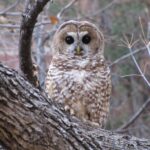 3 Ways the Budget Bill Threatens America’s Wildlife June 18, 2025 Posted in: Conservation, People and Wildlife Somewhere within the more than 19 million acres of pristine wilderness that make up the Arctic National Wildlife Refuge, a caribou calf is following her mother across the tundra. She’s enjoying soft grass under her hooves. She’s munching willow leaves. She’s not thinking about the United States Senate, or “reconciliation bills,” or the National Environmental…
3 Ways the Budget Bill Threatens America’s Wildlife June 18, 2025 Posted in: Conservation, People and Wildlife Somewhere within the more than 19 million acres of pristine wilderness that make up the Arctic National Wildlife Refuge, a caribou calf is following her mother across the tundra. She’s enjoying soft grass under her hooves. She’s munching willow leaves. She’s not thinking about the United States Senate, or “reconciliation bills,” or the National Environmental… 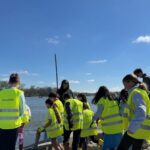 Eco-Green Celebrates Twenty Schools Working Their Way Towards Green Flag Status Through STEAM and Sustainability Education June 18, 2025 Posted in: Students and Nature The National Wildlife Federation's Eco-Green program is celebrating a decade of supporting schools as they implement robust STEAM and sustainability projects at their school campuses. Each school receives an action grant, is paired with a mentor, participates in professional development, and utilizes the EcoSchools U.S. platform to certify their school Bronze, Silver, Gold, or Green…
Eco-Green Celebrates Twenty Schools Working Their Way Towards Green Flag Status Through STEAM and Sustainability Education June 18, 2025 Posted in: Students and Nature The National Wildlife Federation's Eco-Green program is celebrating a decade of supporting schools as they implement robust STEAM and sustainability projects at their school campuses. Each school receives an action grant, is paired with a mentor, participates in professional development, and utilizes the EcoSchools U.S. platform to certify their school Bronze, Silver, Gold, or Green…  Senate Budget Reconciliation Bill Erodes Oil and Gas Laws that Safeguard Wildlife and Benefit Taxpayers June 16, 2025 Posted in: Conservation, People and Wildlife Elk, bighorn sheep, mule deer, burrowing owls, and more than 3,000 species of wildlife depend on lands that are managed by the Bureau of Land Management. These lands provide vital habitat for wildlife to migrate, search for food, and find mates. But these lands are also working lands that serve multiple purposes. They provide endless…
Senate Budget Reconciliation Bill Erodes Oil and Gas Laws that Safeguard Wildlife and Benefit Taxpayers June 16, 2025 Posted in: Conservation, People and Wildlife Elk, bighorn sheep, mule deer, burrowing owls, and more than 3,000 species of wildlife depend on lands that are managed by the Bureau of Land Management. These lands provide vital habitat for wildlife to migrate, search for food, and find mates. But these lands are also working lands that serve multiple purposes. They provide endless… 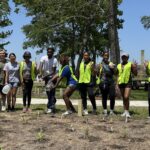 Community Spotlight: A Pocket Prairie for Channelview, TX June 13, 2025 Posted in: Garden Habitats, Get Outside, Students and Nature In April of 2025, culminating two years of community engagement work and NWF’s Resilient Schools and Communities (RiSC) program at Channelview High School, NWF and our local partners created a Pocket Prairie at the Channelview Sports Complex in Channelview, Texas. The beauty of this project lies in the collaboration. It was chosen, implemented and funded,…
Community Spotlight: A Pocket Prairie for Channelview, TX June 13, 2025 Posted in: Garden Habitats, Get Outside, Students and Nature In April of 2025, culminating two years of community engagement work and NWF’s Resilient Schools and Communities (RiSC) program at Channelview High School, NWF and our local partners created a Pocket Prairie at the Channelview Sports Complex in Channelview, Texas. The beauty of this project lies in the collaboration. It was chosen, implemented and funded,…  One Big Beautiful Bill is One Big Horrible Mess June 12, 2025 Posted in: Uncategorized President Trump's so-called "one big beautiful bill"—also known as the budget reconciliation bill, or the GOP-led megabill—passed out of the House on a slim margin late last month and now heads to the Senate, where leadership plans to work quickly to debate and advance the bill to the floor. The bill may be big, but…
One Big Beautiful Bill is One Big Horrible Mess June 12, 2025 Posted in: Uncategorized President Trump's so-called "one big beautiful bill"—also known as the budget reconciliation bill, or the GOP-led megabill—passed out of the House on a slim margin late last month and now heads to the Senate, where leadership plans to work quickly to debate and advance the bill to the floor. The bill may be big, but…  How the Longleaf Pine’s Needles Support the Lumbee People June 11, 2025 Posted in: Conservation, Deforestation, Environmental Justice When settlers invaded North America, they encountered significant beauty and ecological richness, such as the sprawling longleaf pine forests that covered approximately 90 million acres of the Southeast—made possible through hundreds of years of ecological stewardship by North America's Indigenous peoples. However, since the arrival of settlers, vast swaths of those very pines have been…
How the Longleaf Pine’s Needles Support the Lumbee People June 11, 2025 Posted in: Conservation, Deforestation, Environmental Justice When settlers invaded North America, they encountered significant beauty and ecological richness, such as the sprawling longleaf pine forests that covered approximately 90 million acres of the Southeast—made possible through hundreds of years of ecological stewardship by North America's Indigenous peoples. However, since the arrival of settlers, vast swaths of those very pines have been…  Horseshoe Crab Protection and Responsible Offshore Wind Energy June 11, 2025 Posted in: Clean Energy, Conservation, People and Wildlife, Wildlife Facts As spring arrives, the waters and beaches of the mid-Atlantic and Gulf coasts will begin filling with spawning horseshoe crabs (Limulus polyphemus), a species which has called the planet home for over 200 million years. During the late spring and early summer, adult horseshoe crabs travel from deep ocean waters to beaches along the East…
Horseshoe Crab Protection and Responsible Offshore Wind Energy June 11, 2025 Posted in: Clean Energy, Conservation, People and Wildlife, Wildlife Facts As spring arrives, the waters and beaches of the mid-Atlantic and Gulf coasts will begin filling with spawning horseshoe crabs (Limulus polyphemus), a species which has called the planet home for over 200 million years. During the late spring and early summer, adult horseshoe crabs travel from deep ocean waters to beaches along the East…  Toxic Legacies of Hazardous Waste and the Fight for Environmental Justice June 10, 2025 Posted in: Environmental Justice A toxic legacy threatens the health of frontline and fenceline communities across the United States. From Louisiana’s “Cancer Alley” to neighborhoods in Chicago built on top of toxic waste landfills (read our blog on Altgeld Gardens here), hazardous waste has long been both a product of and a contributor to racial, socioeconomic, and environmental injustice. …
Toxic Legacies of Hazardous Waste and the Fight for Environmental Justice June 10, 2025 Posted in: Environmental Justice A toxic legacy threatens the health of frontline and fenceline communities across the United States. From Louisiana’s “Cancer Alley” to neighborhoods in Chicago built on top of toxic waste landfills (read our blog on Altgeld Gardens here), hazardous waste has long been both a product of and a contributor to racial, socioeconomic, and environmental injustice. …  The New Normal Is Already a Loss: How Shifting Baselines Skew Our View of Nature June 10, 2025 Posted in: Conservation, People and Wildlife As children, the natural world we grow up in is the only reference point we have. However, with each generation, our perception of the natural world changes, and with it, our understanding of what accounts for abundance and loss of biodiversity. A term bandied about is the “new normal.” In ecology, it’s called the shifting…
The New Normal Is Already a Loss: How Shifting Baselines Skew Our View of Nature June 10, 2025 Posted in: Conservation, People and Wildlife As children, the natural world we grow up in is the only reference point we have. However, with each generation, our perception of the natural world changes, and with it, our understanding of what accounts for abundance and loss of biodiversity. A term bandied about is the “new normal.” In ecology, it’s called the shifting…  Restoring Maryland’s Shores: An Innovative Coastal Resilience Strategy in Havre de Grace, Maryland June 9, 2025 Posted in: Conservation “This has needed to happen for over 80 years,” said a life-long Havre de Grace resident as he looked out over the newly constructed living shoreline that will reduce flooding and erosion of Water Street in the city of Havre de Grace, Maryland. Living shorelines are key when developing plans for coastal resilience, especially along…
Restoring Maryland’s Shores: An Innovative Coastal Resilience Strategy in Havre de Grace, Maryland June 9, 2025 Posted in: Conservation “This has needed to happen for over 80 years,” said a life-long Havre de Grace resident as he looked out over the newly constructed living shoreline that will reduce flooding and erosion of Water Street in the city of Havre de Grace, Maryland. Living shorelines are key when developing plans for coastal resilience, especially along…  Disaster Preparedness is a Shared Responsibility June 6, 2025 Posted in: Uncategorized Back in January, Taofik Oladipo and I wrote a blog about the LA fires, a stark reminder of how quickly disaster can strike even in areas familiar with seasonal threats. In that piece, we noted how evacuation orders were issued late, leaving many residents scrambling with little time to react. That event underscored the importance…
Disaster Preparedness is a Shared Responsibility June 6, 2025 Posted in: Uncategorized Back in January, Taofik Oladipo and I wrote a blog about the LA fires, a stark reminder of how quickly disaster can strike even in areas familiar with seasonal threats. In that piece, we noted how evacuation orders were issued late, leaving many residents scrambling with little time to react. That event underscored the importance…  Becoming a Mature Butterfly: Celebrating a Decade-Long Pledge for Monarchs June 4, 2025 Posted in: Conservation, Garden Habitats, People and Wildlife 2025 marks 10 years of the Mayors’ Monarch Pledge program’s work to build an unstoppable movement that supports healthy communities, wildlife, and ecosystems for all. The program is grounded in protecting our ambassador species, the monarch butterfly, and the many other native pollinator species that are declining across North America. Along this ten-year journey, we…
Becoming a Mature Butterfly: Celebrating a Decade-Long Pledge for Monarchs June 4, 2025 Posted in: Conservation, Garden Habitats, People and Wildlife 2025 marks 10 years of the Mayors’ Monarch Pledge program’s work to build an unstoppable movement that supports healthy communities, wildlife, and ecosystems for all. The program is grounded in protecting our ambassador species, the monarch butterfly, and the many other native pollinator species that are declining across North America. Along this ten-year journey, we…  5 Facts About Hummingbirds June 3, 2025 Posted in: Conservation, Garden Habitats 1. One hummingbird can visit 1,000 flowers in a day! When thinking about pollinators, the first image that may come to mind is likely a bee, or maybe even a butterfly. But hummingbirds are one of just a few birds that pollinate! They often visit long, tube-shaped flowers that are well suited to their slim…
5 Facts About Hummingbirds June 3, 2025 Posted in: Conservation, Garden Habitats 1. One hummingbird can visit 1,000 flowers in a day! When thinking about pollinators, the first image that may come to mind is likely a bee, or maybe even a butterfly. But hummingbirds are one of just a few birds that pollinate! They often visit long, tube-shaped flowers that are well suited to their slim…  Forage Fish are the Unsung Heroes of the Sea June 3, 2025 Posted in: Conservation, Wildlife Facts What are Forage fish? Forage fish are small schooling species that serve as prey (food) for larger fish, marine mammals and sea birds. Forage fish are critical to healthy marine ecosystems because they serve as a key link in the food web, transferring energy from plankton to the larger predators. They also play an important role…
Forage Fish are the Unsung Heroes of the Sea June 3, 2025 Posted in: Conservation, Wildlife Facts What are Forage fish? Forage fish are small schooling species that serve as prey (food) for larger fish, marine mammals and sea birds. Forage fish are critical to healthy marine ecosystems because they serve as a key link in the food web, transferring energy from plankton to the larger predators. They also play an important role…  The Heat That’s Here to Stay June 3, 2025 Posted in: Environmental Justice, People and Wildlife You may have found yourself trying to stave off the staggering heat last summer, and you’re not alone. Over 75 million people in the U.S. were under heat advisories by June. Though heat waves and unusually warm temperatures are normal variations in weather, climate change is making heat more intense, prolonged, and deadly. People around…
The Heat That’s Here to Stay June 3, 2025 Posted in: Environmental Justice, People and Wildlife You may have found yourself trying to stave off the staggering heat last summer, and you’re not alone. Over 75 million people in the U.S. were under heat advisories by June. Though heat waves and unusually warm temperatures are normal variations in weather, climate change is making heat more intense, prolonged, and deadly. People around… 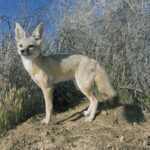 Campuses Receive Wild Kingdom Grant Award to Protect Endangered Wildlife June 2, 2025 Posted in: Conservation, Students and Nature Mutual of Omaha’s Wild Kingdom and the National Wildlife Federation have joined forces again to inspire and support the efforts of the next generation of conservation leadership. We are collaborating on a series of grants that support colleges and universities to showcase and fund innovative and solutions-based programs that help protect threatened and endangered wildlife and their habitats.…
Campuses Receive Wild Kingdom Grant Award to Protect Endangered Wildlife June 2, 2025 Posted in: Conservation, Students and Nature Mutual of Omaha’s Wild Kingdom and the National Wildlife Federation have joined forces again to inspire and support the efforts of the next generation of conservation leadership. We are collaborating on a series of grants that support colleges and universities to showcase and fund innovative and solutions-based programs that help protect threatened and endangered wildlife and their habitats.… 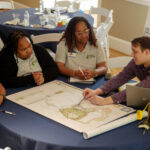 Q&A with ECHO’s Landscape Designers May 28, 2025 Posted in: Get Outside, People and Wildlife, Students and Nature At the National Wildlife Federation’s Early Childhood Health Outdoors (ECHO) initiative, landscape architecture is a major piece of their mission to expand access to nature for young children across the United States. ECHO’s landscape designers work with sites including child care centers, family child care homes, schools, and public spaces to reimagine their outdoor space…
Q&A with ECHO’s Landscape Designers May 28, 2025 Posted in: Get Outside, People and Wildlife, Students and Nature At the National Wildlife Federation’s Early Childhood Health Outdoors (ECHO) initiative, landscape architecture is a major piece of their mission to expand access to nature for young children across the United States. ECHO’s landscape designers work with sites including child care centers, family child care homes, schools, and public spaces to reimagine their outdoor space…  The Truth About Clean Energy May 28, 2025 Posted in: Clean Energy, People and Wildlife 1. Renewable energy is reliable Fossil fuels are the leading cause of energy grid blackouts. As the climate crisis worsens, America’s rising energy demand and increasingly frequent extreme weather events are leading to more energy grid blackouts. Some are quick to point the finger at renewable energy, however, renewable energy has actually become more reliable…
The Truth About Clean Energy May 28, 2025 Posted in: Clean Energy, People and Wildlife 1. Renewable energy is reliable Fossil fuels are the leading cause of energy grid blackouts. As the climate crisis worsens, America’s rising energy demand and increasingly frequent extreme weather events are leading to more energy grid blackouts. Some are quick to point the finger at renewable energy, however, renewable energy has actually become more reliable…  Two Years After Sackett: Still Wading Through Muddy Waters May 25, 2025 Posted in: Conservation, Environmental Justice As music pioneer Fela Kuti once audaciously sang—water no get enemy (water has no enemy). This is a proverb from the Yoruba tribe of Nigeria that sums up a universal basic reality: water sustains life. It is simply irreplaceable, essential, and ubiquitous. The Supreme Court's ruling in Sackett v. EPA has left basic federal pollution…
Two Years After Sackett: Still Wading Through Muddy Waters May 25, 2025 Posted in: Conservation, Environmental Justice As music pioneer Fela Kuti once audaciously sang—water no get enemy (water has no enemy). This is a proverb from the Yoruba tribe of Nigeria that sums up a universal basic reality: water sustains life. It is simply irreplaceable, essential, and ubiquitous. The Supreme Court's ruling in Sackett v. EPA has left basic federal pollution…  Sustainable Aviation Fuels: How Do They Fit into Our Climate Goals? May 19, 2025 Posted in: Clean Energy When you think of greenhouse gas emissions, what sources do you think of? The energy sector, cars, and airplanes might be some of the industries that come to mind first. And you’d be right! Transportation as a sector makes up 28% of all greenhouse gas emissions and air travel alone makes up 11.5% of these…
Sustainable Aviation Fuels: How Do They Fit into Our Climate Goals? May 19, 2025 Posted in: Clean Energy When you think of greenhouse gas emissions, what sources do you think of? The energy sector, cars, and airplanes might be some of the industries that come to mind first. And you’d be right! Transportation as a sector makes up 28% of all greenhouse gas emissions and air travel alone makes up 11.5% of these… 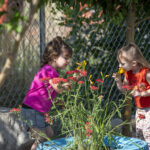 Using Landscape Architecture to Help Shape the Lives of Young Children May 14, 2025 Posted in: Garden Habitats, People and Wildlife, Students and Nature We may not always realize it, but the outdoor spaces where we spend time daily help shape our lives and support our well-being. The spaces where we live, work, and play help to keep us active, safe, cool, healthy, and connected. From the gardens where we relax, to the parks where we play, even the…
Using Landscape Architecture to Help Shape the Lives of Young Children May 14, 2025 Posted in: Garden Habitats, People and Wildlife, Students and Nature We may not always realize it, but the outdoor spaces where we spend time daily help shape our lives and support our well-being. The spaces where we live, work, and play help to keep us active, safe, cool, healthy, and connected. From the gardens where we relax, to the parks where we play, even the…  A Call to Renew the Habitat Conservation Fund May 13, 2025 Posted in: Conservation, People and Wildlife California is home to an incredible wild heritage. I can observe with wonder across the state: humpback whales breaching in the Pacific Ocean, monarch butterflies clustering in trees on California’s coast, Chinook salmon spawning in the Sacramento River, mule deer migrating in the Eastern Sierra, and mountain lions roaming the Santa Monica Mountains in Los…
A Call to Renew the Habitat Conservation Fund May 13, 2025 Posted in: Conservation, People and Wildlife California is home to an incredible wild heritage. I can observe with wonder across the state: humpback whales breaching in the Pacific Ocean, monarch butterflies clustering in trees on California’s coast, Chinook salmon spawning in the Sacramento River, mule deer migrating in the Eastern Sierra, and mountain lions roaming the Santa Monica Mountains in Los… 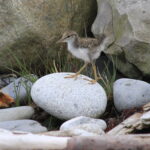 Wins for Wildlife: How We Worked to Site Wind Energy and Protect Wildlife in the Gulf of Maine May 8, 2025 Posted in: Clean Energy, Conservation, People and Wildlife This article was originally posted on Maine Audubon. Offshore wind holds incredible potential to help meet the clean energy goals needed for a healthy climate. The Gulf of Maine, in particular, with its strong, sustained winds, is one of the best locations in the world to harness renewable wind energy. However, offshore wind development must…
Wins for Wildlife: How We Worked to Site Wind Energy and Protect Wildlife in the Gulf of Maine May 8, 2025 Posted in: Clean Energy, Conservation, People and Wildlife This article was originally posted on Maine Audubon. Offshore wind holds incredible potential to help meet the clean energy goals needed for a healthy climate. The Gulf of Maine, in particular, with its strong, sustained winds, is one of the best locations in the world to harness renewable wind energy. However, offshore wind development must…  Endangered Species Day is May 16—Take Time to Learn and Act This Year May 8, 2025 Posted in: Conservation, People and Wildlife, Students and Nature, Wildlife Facts In 2006 the United States Congress designated the third Friday in May as Endangered Species Day (ESD). ESD spotlights and advances conservation efforts for endangered (and threatened) species in the U.S. and around the world. It’s an opportunity to learn about endangered species and to take action to help these vulnerable plants and animals. The…
Endangered Species Day is May 16—Take Time to Learn and Act This Year May 8, 2025 Posted in: Conservation, People and Wildlife, Students and Nature, Wildlife Facts In 2006 the United States Congress designated the third Friday in May as Endangered Species Day (ESD). ESD spotlights and advances conservation efforts for endangered (and threatened) species in the U.S. and around the world. It’s an opportunity to learn about endangered species and to take action to help these vulnerable plants and animals. The…  A Quiet Push to Sell Public Lands May 8, 2025 Posted in: Conservation, People and Wildlife In a late-night move that flew under the radar for most Americans, Representatives Mark Amodei (R-NV) and Celeste Maloy (R-UT) proposed an amendment to the House Natural Resources Committee’s Reconciliation Bill that aims to speed up the process of disposing of federal public lands in Utah and Nevada. The amendment passed largely along partisan lines,…
A Quiet Push to Sell Public Lands May 8, 2025 Posted in: Conservation, People and Wildlife In a late-night move that flew under the radar for most Americans, Representatives Mark Amodei (R-NV) and Celeste Maloy (R-UT) proposed an amendment to the House Natural Resources Committee’s Reconciliation Bill that aims to speed up the process of disposing of federal public lands in Utah and Nevada. The amendment passed largely along partisan lines,…  Spring (Baby) Fever May 8, 2025 Posted in: Wildlife Facts Spring is a time of renewal, and nowhere is this more evident than in the emergence of baby animals. As the weather warms and flowers bloom, countless species begin their journey into the world—bringing a wave of joy, cuteness, and wonder. From fluffy kits to tiny pups to miniature hatchlings, the spring season is a…
Spring (Baby) Fever May 8, 2025 Posted in: Wildlife Facts Spring is a time of renewal, and nowhere is this more evident than in the emergence of baby animals. As the weather warms and flowers bloom, countless species begin their journey into the world—bringing a wave of joy, cuteness, and wonder. From fluffy kits to tiny pups to miniature hatchlings, the spring season is a…  Heirs to the Land: Black Land Loss, Recovery, & Stewardship May 6, 2025 Posted in: Environmental Justice The National Wildlife Federation works directly to address the issue of Black land loss and ownership—a centuries-long battle that stifled the progress of newly freed people in the 1800s that continues to disproportionately affect Black families. In 1865, General William T. Sherman issued the Special Order 15, more commonly known as “40 Acres and a…
Heirs to the Land: Black Land Loss, Recovery, & Stewardship May 6, 2025 Posted in: Environmental Justice The National Wildlife Federation works directly to address the issue of Black land loss and ownership—a centuries-long battle that stifled the progress of newly freed people in the 1800s that continues to disproportionately affect Black families. In 1865, General William T. Sherman issued the Special Order 15, more commonly known as “40 Acres and a…  In Win for Florida Community, Judge Says No Permits for Apalachicola River Basin Oil Drilling May 1, 2025 Posted in: Conservation, People and Wildlife Fifteen years after the Deepwater Horizon Oil Spill, drilling still impacts the lives of those who call the Gulf Coast home. Places like Apalachicola, Florida, unimpacted by the oil itself, were still deeply affected by lost tourism dollars, declines in fishing revenues and damage to the oyster industry. Waterfront communities like this, with multi-generational roots…
In Win for Florida Community, Judge Says No Permits for Apalachicola River Basin Oil Drilling May 1, 2025 Posted in: Conservation, People and Wildlife Fifteen years after the Deepwater Horizon Oil Spill, drilling still impacts the lives of those who call the Gulf Coast home. Places like Apalachicola, Florida, unimpacted by the oil itself, were still deeply affected by lost tourism dollars, declines in fishing revenues and damage to the oyster industry. Waterfront communities like this, with multi-generational roots…  Sacrificing Miners’ Health for a Dying Industry April 29, 2025 Posted in: Clean Energy, People and Wildlife “Beautiful, clean coal.” At least that’s what the current administration is saying to help justify a recent series of executive orders aimed at boosting coal production. In reality, there’s nothing clean about coal. Like other fossil fuel plants, facilities burning coal spew pollutants including mercury, lead, sulfur dioxide, and heavy metals. These are linked to…
Sacrificing Miners’ Health for a Dying Industry April 29, 2025 Posted in: Clean Energy, People and Wildlife “Beautiful, clean coal.” At least that’s what the current administration is saying to help justify a recent series of executive orders aimed at boosting coal production. In reality, there’s nothing clean about coal. Like other fossil fuel plants, facilities burning coal spew pollutants including mercury, lead, sulfur dioxide, and heavy metals. These are linked to…  An Open Letter to Aspiring Ecologists, Conservationists, and Naturalists April 28, 2025 Posted in: People and Wildlife To everyone striving to make a difference in ecology, conservation, and natural sciences, I know the journey isn’t always easy. Choosing to walk a path dedicated to understanding, protecting, and advocating for the natural world takes courage, resilience, and an unwavering commitment to the bigger picture. As you work in wildlife, forestry, or fire ecology,…
An Open Letter to Aspiring Ecologists, Conservationists, and Naturalists April 28, 2025 Posted in: People and Wildlife To everyone striving to make a difference in ecology, conservation, and natural sciences, I know the journey isn’t always easy. Choosing to walk a path dedicated to understanding, protecting, and advocating for the natural world takes courage, resilience, and an unwavering commitment to the bigger picture. As you work in wildlife, forestry, or fire ecology,… 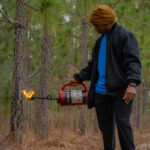 Igniting Interest: Introducing Students to the Art of Prescribed Burning April 28, 2025 Posted in: Conservation, Deforestation, Get Outside, People and Wildlife The longleaf pine range of the Southeastern United States has seen a rapid decline in acreage as human development continues to cause significant declines in natural habitats. In an age where forest stewardship is more important than ever, education plays a crucial role in shaping future conservationists. Fort Valley State University’s (FVSU) newest club, FireCats,…
Igniting Interest: Introducing Students to the Art of Prescribed Burning April 28, 2025 Posted in: Conservation, Deforestation, Get Outside, People and Wildlife The longleaf pine range of the Southeastern United States has seen a rapid decline in acreage as human development continues to cause significant declines in natural habitats. In an age where forest stewardship is more important than ever, education plays a crucial role in shaping future conservationists. Fort Valley State University’s (FVSU) newest club, FireCats,…  Community Benefits Plans: Where do they stand now? April 24, 2025 Posted in: Clean Energy, Environmental Justice On Martha’s Vineyard, where the Vineyard Wind offshore wind project was being planned, a local nonprofit advocated for community consultation about the project, local employment opportunities, and opportunities for power purchase agreements with the project developer, Vineyard Power. Discussion of these direct benefits to communities might have been far less likely without a community benefit…
Community Benefits Plans: Where do they stand now? April 24, 2025 Posted in: Clean Energy, Environmental Justice On Martha’s Vineyard, where the Vineyard Wind offshore wind project was being planned, a local nonprofit advocated for community consultation about the project, local employment opportunities, and opportunities for power purchase agreements with the project developer, Vineyard Power. Discussion of these direct benefits to communities might have been far less likely without a community benefit… 
